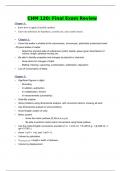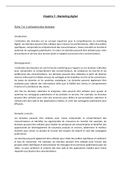Other
CHEM120 Final Exam Guide / CHEM 120 Final Exam Guide / CHEM 120 Final Exam Review/ CHEM120 Final Exam Review(V1)(Updated-): Chamberlain College Of Nursing
- Course
- Institution
CHEM120 Final Exam Guide / CHEM 120 Final Exam Guide / CHEM 120 Final Exam Review/ CHEM120 Final Exam Review(V1)(Updated-): Chamberlain College Of Nursing
[Show more]




